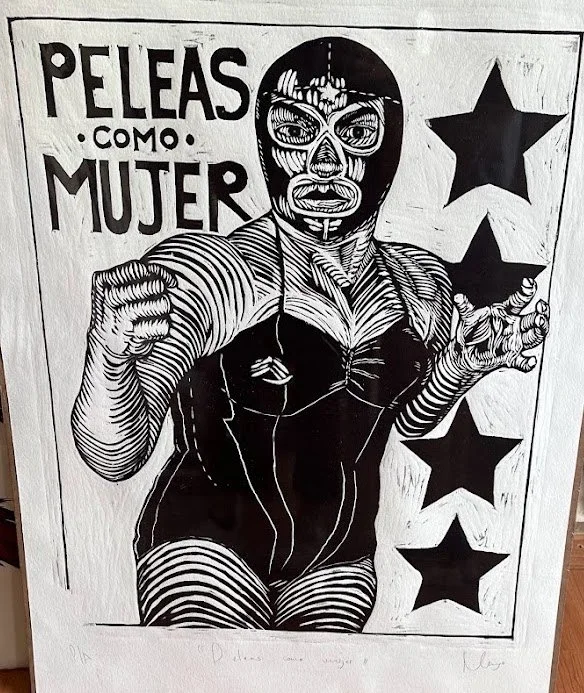Coffees and Tequio
Most days we are locked in our tourist bubble - enjoying the beauty of Oaxaca with the distance of the visitor, taking in picturesque murals, the polished cultural life, the high end cuisine. All that was built here to serve us, the tourists.
But on a few precious occasions I’ve had the chance to sit down with locals or those who’ve made their home in Oaxaca, and these conversations were full of insight and awakening.
I met an artist and activist named Alexis through our common friend (you’re a gem of a human, Henry!). She’s an American who has lived in Oaxaca for a few years. Our conversation meandered, and she offered a solid primer on the Indigenous communities in Oaxaca. She taught me about the history of collective action that is core to the survival of Indigeneity in the Oaxaca valley. When you mix powerful community life with a geography that is very difficult for commerce (lots of mountains means winding mountainous roads) you get this ability to preserve a way of life that has been replaced by modernism and capitalism in many other parts of Mexico. As a result, Oaxaca has a magnetism for like-minded folks from across the country and beyond.
At one point, we went down the path of all of the overwhelming concerns about the world and the future we are passing to the next generation. Alexis framed her point of reference exquisitely, saying she and her sister are looking for glimmers to focus their energy. So that is my goal now too…to look for the glimmers that will be worth my time for my blip on Earth, and to put my effort into those things. I have been searching for the glimmers in our travels since this conversation. What a powerful orientation.
I also spent a morning last week with Denis, an Argentinian artist who was invited to live in Mexico on an artist visa to study pottery (Fiera). I took his workshop at Cafe Bestia, down the street from our Airbnb and spent hours learning how to work the clay to shape it into something special. I attempted to follow his techniques with moderate success. And while we worked we talked about the challenges of life in Argentina, his move to Mexico, the war in Gaza, and the airbnb-ing of Oaxaca, driving up prices and displacing locals as it does everywhere else.
But for me the gem of our conversation was the lesson of the clay itself. Pottery is one of the core parts of artisan culture in and around Oaxaca (as are textiles, hat making and the colorful wood sculptures called alebrijes). Early in the workshop, Denis made the point that this mud, this clay, had taken a long time to come to be, and that part of the process of shaping pottery is to respect the clay itself. All molding and sculpting must be done slowly and, with care, small indents become cups and bowls, but the clay will only respond if you move slowly and respect its nature. Otherwise there will be fissures, air pockets and breaks that cannot be repaired.
The last coffee was with an incredible Mexican artist named Abril who operates under the pseudonym Mayo (get it?). She led the block carving and printmaking class that I took with Geoff. She is amazing. Over coffee she shared that she grew up in an industrialized city outside of Mexico City. She described her life there as feeling trapped and hopeless. She followed all the rules (and excelled academically) and went to university to study languages, then taught French for a few years afterwards. But when she discovered Oaxaca, and the culture of community and resistance described above, she felt at home. She moved with her brother to Oaxaca City, learned the context of political resistance behind the art of printmaking and eventually set up their workshop and gallery (Prietos Taller).
Every second of this conversation was meaningful, as I learned her perspective about the power of art to spark social movements and find common language when words don’t cut it. As an example, during the workshop she talked about the importance of skulls and skeletons in Mexican art, not just as a celebration of Dia de los Muertos, but as a political statement - that we are all the same under our skin. While we sipped coffee, she shared with me the concept of tequio (from the Nahuatl word tequitl) in which each person must contribute their talent and their gifts to the collective good without expecting payment, and each person’s well-being is tied up in the well-being of every other person in the community. It’s the opposite orientation of capitalism and greed - me first, gimme gimme.
Many years ago when Matt and I lived in Ecuador, we experienced the community coming together for a minga, where everyone was expected to participate in the collective work of repairing a road after a mudslide or fixing the water cistern if a leak is found. This similar concept is deeply rooted in Oaxaca as well. Indigenous culture has continued to thrive in this city (despite us tourists and the disruptive influences of capitalism) and seems to be a beautiful glimmer to help us reorient away from what feels so broken.
So… as we leave Oaxaca City, I am:
Searching for glimmers
Attempting to move more respectfully with the timescale of nature
Seeking to learn more about how to build my life with tequio
I’m so grateful for these gifts.
